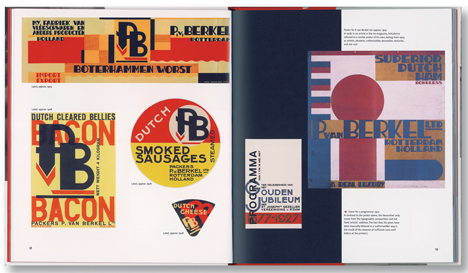Nederland Bouwt Betonwegen.
Schuitema, Paul -
Published by Amsterdam, ENCY-CEMY N.V. (1938), Photo-illustrated stiff wrappers designed in photomontage by Schuitema (softcover) in plastic ringbinder , 29,7 x 21 cms., 80 pp. throughout photo-illustrated, folded map, text in Dutch.
An innovator in graphic design, typography, photography and furniture design, Paul Schuitema was a member of Kurt Schwitters’ Ring neue Werbegestalter (Circle of New Designers), whose associates included László Moholy-Nagy, Herbert Bayerand Jan Tschichold. Yet despite Schuitema’s significant role in the development of typography for mass communication and advertising, he remains less recognised than his contemporaries. A new monograph by Dick Maan sets to redress this balance, and to offer the first concise overview of Schuitema’s work including his graphic design and typography, as well as his photography, furniture and film work.
While he began his artistic career as a painter, studying at the Academie voor Beeldende Kunsten in Rotterdam, Schuitema turned away from what he saw as a bourgeois activity after the First World War, and instead, in line with the Russian Constructivists and German Bauhaus activists, embraced modern technology and mass production. "The war of 1914-1918 had demonstrated that fine words and slogans were nonsense, romanticism had ended in bloodshed, heroism and patriotism were only for profit," he wrote in the exhibition catalogue for a retrospective of his work at the Kunstgewerbe Museum of Zurich in 1967. "Everything had turned out to be dirty, mendacious and full of false pathos. The function of art was to reassume the lost position. Graphic art had to be extremely functional; printwork had selling as its goal, it had to be clear and purposeful. In fact, it meant a marriage between typography and photography."
Schuitema strove to remove all decorative flourishes from his work, concentrating on sans-serif lettering as a means to communicate more directly and practically with the reader. He was similarly experimental with his photography and, alongside his colleagues Piet Zwart and Gerard Kiljan, contributed significantly to the development of New Photography in the Netherlands, becoming one of the first Dutch teachers of photography at the Academy of Visual Art in The Hague. He remained linked to the university until his retirement in 1962, and his integration of photography and typography also resulted in a number of striking adverts, most particularly for the Van Berkel companies.
Maan’s book contains excellent visuals of all this work, as well as images from Schuitema’s experimental film work and his mass-production furniture design, some of which is still being manufactured today, more than 70 years after its inception. Tracing and accurately dating the images was no easy task, in part due to Schuitema’s belief that his early designs were simply "old paper" and was therefore a somewhat erratic archivist of his own work. Inevitably however, with his work continuing to appear in retrospective exhibitions, these pieces have in fact become collector’s items, a trend that is set to continue with the publication of this book, which offers an excellent introduction to over 50 years of his work.


